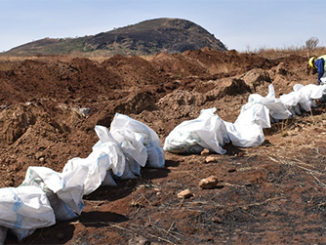By Dr. Stan Trout | Spontaneous Materials
As a regular follower of comments about rare earths on LinkedIn, one of the more puzzling things I find is the occasional call for a US policy on rare earths. One common theme is: rare earths are used for military purposes and they overwhelmingly come from China, therefore we must do something to avoid any interruption in supply, even temporarily. An alternate theme is to show a forecast for the strong growth of a specific application like electric vehicles and claim that there will not be enough neodymium or dysprosium to fulfill the ultimate demand. Usually the person or persons making these arguments, or even the subsequent comments, are not directly involved in the industry; they may be involved in some peripheral way, or just be interested by-standers. But a single post can generate many comments and a long-tortured discussion, without reaching a satisfactory conclusion.
Often the additional comments will mention some tactical things that should or should not be done to mitigate the risks. Some typical suggestions are: we should have stockpiles, we should fund research, we should develop our own resources, we should find alternatives, we should have tariffs, etc. Let’s assume they are all well-meaning suggestions; even so they hardly constitute a policy, even if lumped together. They are really just a collection of tactics without an overall strategy. Notice too, that the use of the word “we” is vague. It usually is looking for government funding or support to save the day. One critique of these suggestions is that they usually apply to a single application or a limited group of applications, and do nothing to look at the big picture. They overlook the complications of the rare earth industry as it exists today. They may help in one area, but completely ignore others. A good policy, I would argue, needs to apply to the whole industry and its many stakeholders, not just the needs of the few.
So I would like to try to write the key points for such a policy, in terms of what it should recognize and what it should do. This is no small feat, but I would encourage my readers to broaden these points and to add to them, in order to make the strategy as comprehensive as possible. Maybe we will come up with something good.
First we should acknowledge three basic premises of the rare earth industry.
1. The rare earth industry is not a single industry, but a set of interconnected and interdependent businesses, each with its own unique supply and demand characteristics.
2. Because of the required investment, there is a significant barrier to entry. Therefore, the number of players is limited.
3. The nature and emphasis of the rare earth business will change over time. As technologies change, so do the needs in the marketplace. TV’s based on cathode ray tubes are long gone. Today’s champion is NdFeB. What will be needed tomorrow?
My feeling is that points #1 and #3 are underappreciated.
A US-focused rare earth industrial policy needs to address the following points.
1. It should recognize the existence and the roll of the many stakeholders involved, including: miners, processors, downstream customers, researchers, etc. It should give preferential treatment to stakeholders who are committed to the industry for the long-term.
2. It should recognize the importance of sustainability in the supply chain. This term is often used to describe an environmental philosophy of doing things in a way that can keep going in perpetuity without damaging the environment, which is important here. But I also mean it to include financial profitability. A business is simply not sustainable in the long-term if it cannot guarantee a minimal degree of financial success; otherwise investors will simply go elsewhere. The strategy specifically needs to address how financial success can be maintained, even during a poor business environment. While we will always need some creative destruction, we cannot allow too many companies to go under due to temporary business conditions. (This will not be easy.)
3. The strategy needs to address how to grow the industry, specifically through the development of several new major applications involving rare earths with great supply and limited markets, like cerium and lanthanum. (I’m sure some people will read this point and think this is exactly what they are doing. However, they are wrong by several orders of magnitude.) It needs to closely monitor industrial trends to learn about shifts in the marketplace.
Are these points enough to start a serious conversation? We’ll see.
SRT
December 10, 2018
 About the Author- Dr. Stan Trout has more than 40 years experience in the permanent magnet and rare earth industries. Dr. Trout has a B.S. in Physics from Lafayette College and a PhD in Metallurgy and Materials Science from the University of Pennsylvania. Stan is a contributing colunmist for Magnetics: Business & Technology magazine. Spontaneous Materials, his consultancy, provides practical solutions in magnetic materials, the rare earths, technical training, and technical writing. He can be reached at strout@ieee.org
About the Author- Dr. Stan Trout has more than 40 years experience in the permanent magnet and rare earth industries. Dr. Trout has a B.S. in Physics from Lafayette College and a PhD in Metallurgy and Materials Science from the University of Pennsylvania. Stan is a contributing colunmist for Magnetics: Business & Technology magazine. Spontaneous Materials, his consultancy, provides practical solutions in magnetic materials, the rare earths, technical training, and technical writing. He can be reached at strout@ieee.org



